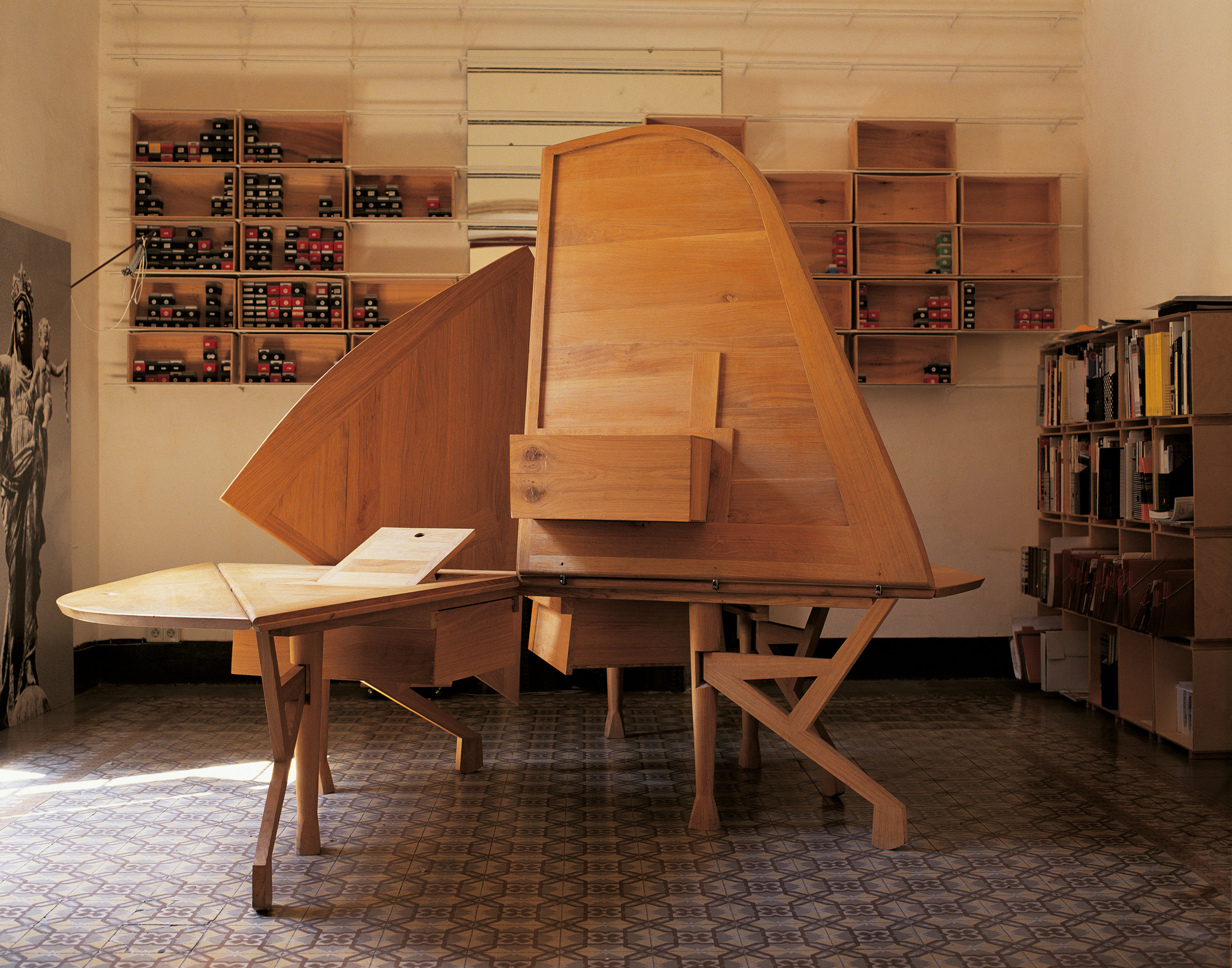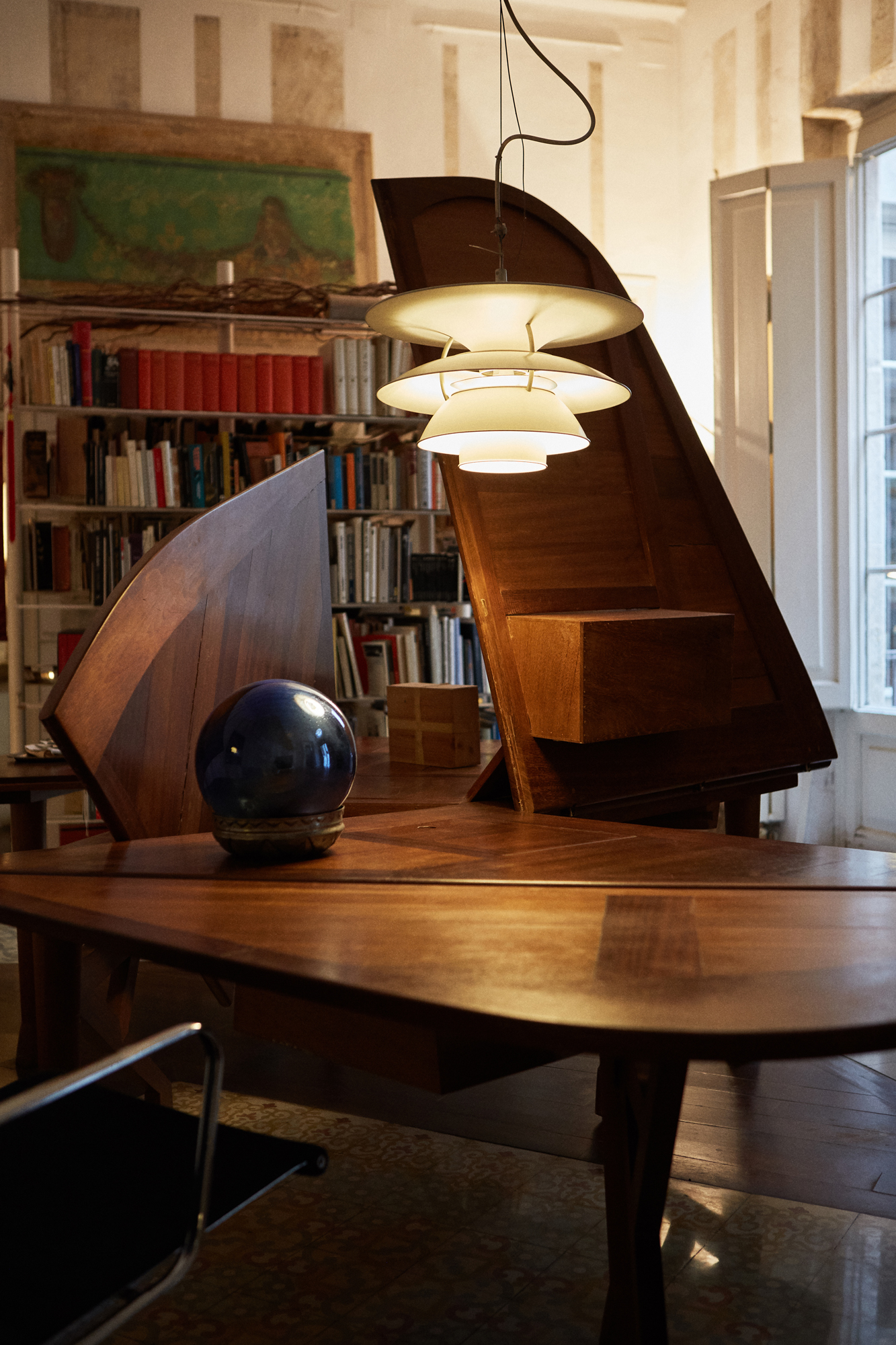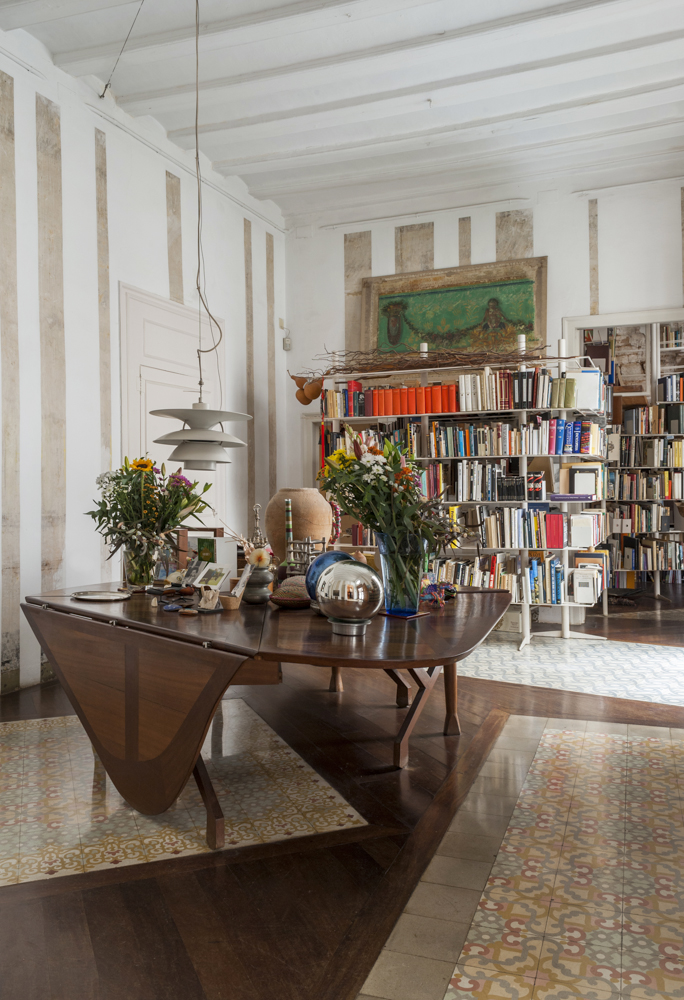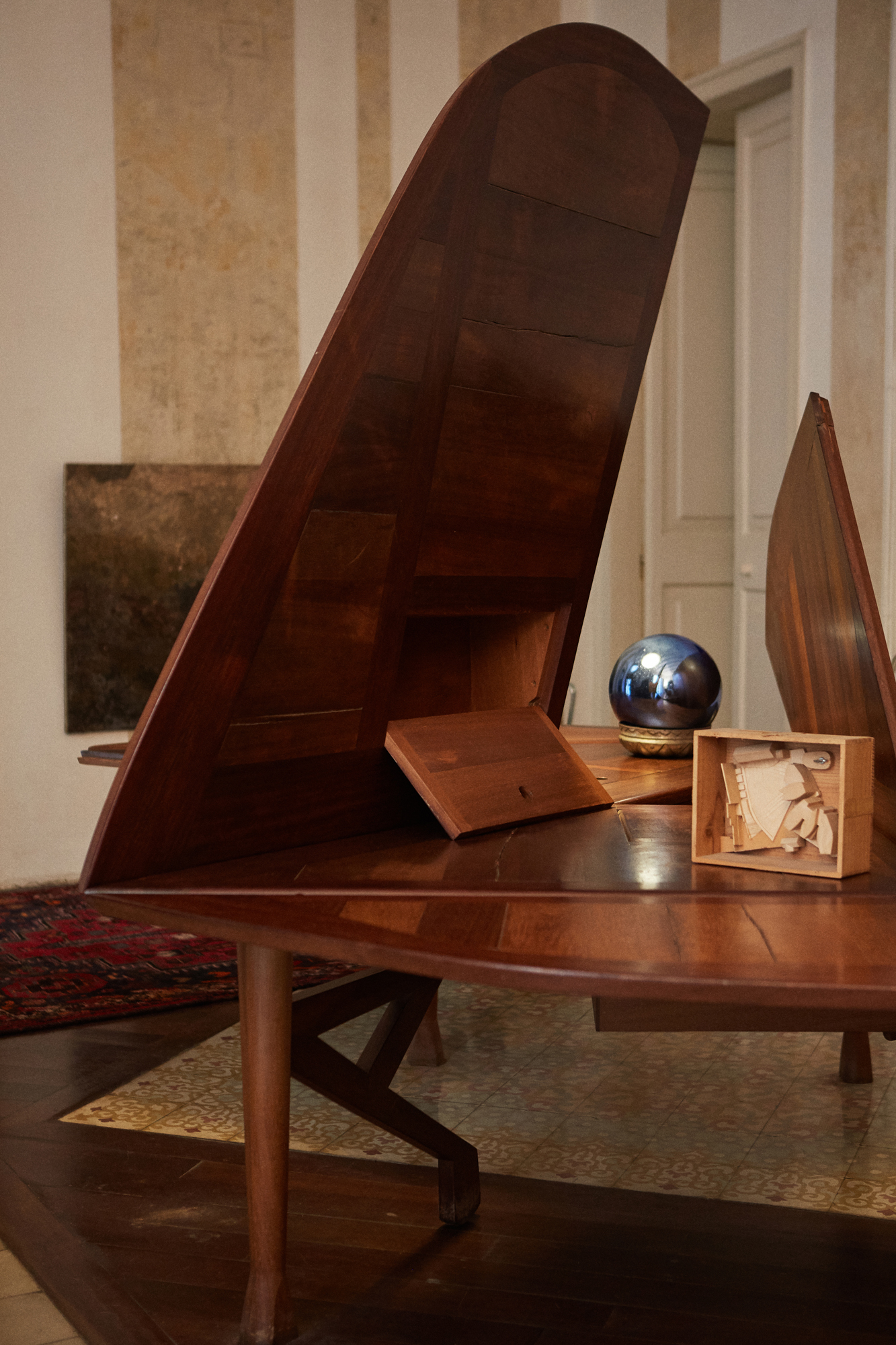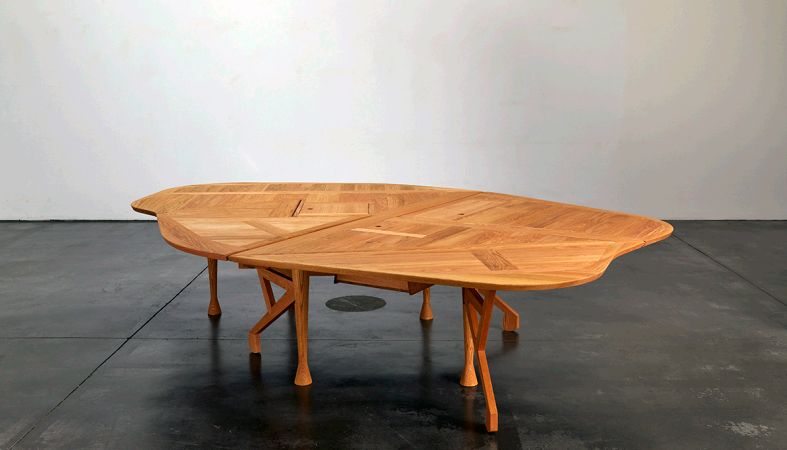
The Ines-table was designed by Enric Miralles for the collective exhibition Le Magazine in Grenoble, France, in 1993. Commissioned as a piece to represent his work and stimulate discussion among participants, Miralles conceived a table that would serve not as a topic, but as a medium of dialogue-”not talked about, but talked on.” The table is described as an “invisible piece,” emerging from a conceptual doubt, and is capable of adopting multiple configurations. Its foldable design transforms it into a mutable landscape, shifting form and function throughout the day.
The table incorporates hidden compartments-boxes and drawers-that serve as storage for personal tools, blending working surfaces with spaces of reflection. It is simultaneously a working space and what Miralles terms an “internal landscape,” an object capable of adapting to various uses and narratives. The project encapsulates Miralles’ interest in repetition and variation, where each fold or reconfiguration presents a subtle difference. After the exhibition, multiple copies were made-one remained in the studio, another with the carpenter, and another ended up at the Rotterdam Museum.
This piece ultimately became a functional element in the architect’s home, symbolizing both his working conditions and his poetic approach to design. In his words, it “represents us when we leave home.”
